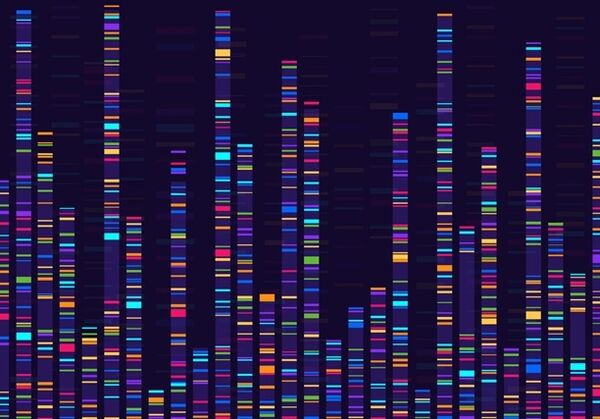National Genomic Research Library data leads to new diagnoses of two new genetic disorders

New research has uncovered two new genetic disorders through data from the National Genomic Research Library, providing new diagnoses and opening the door for future treatments.
Three new pieces of research published in Nature Genetics analysed the genetic data from thousands of patients and participants who contributed to the National Genomic Research Library – managed by Genomics England - and describe two neurodevelopmental conditions:
- RNU2-2-related disorder, which is linked to developmental delays, intellectual disability, small head size, autistic traits and seizures.
- RNU5B-1-related disorder, which is associated with developmental delays, weak muscle tone, larger-than-average head size, and poor growth.
These follow the discovery of ReNU syndrome in 2024, when two groups of researchers who also used data from the National Genomic Research Library uncovered a gene called RNU4-2 as one of the most common single-gene causes of neurodevelopmental conditions.
“This is an exciting discovery, made possible through Genomics England’s National Genomic Research Library, that's transforming lives for families across the globe.
“For potentially thousands of families with neurodevelopmental conditions, this could mean long-awaited answers — and the identification of new molecular targets that could lead to innovative treatments.
“Advances like this show how understanding our genes and DNA is revolutionising the way we diagnose and treat disease. None of it would be possible without the incredible contribution of participants in the 100,000 Genomes Project and the NHS Genomic Medicine Service, who have generously shared their clinical and genomic data to power research.”
Professor Matt Brown
Chief Scientific Officer of Genomics England
The research studies add to a growing body of evidence exploring the crucial role that non-coding regions of the genome can play in brain development. This was also demonstrated in the discovery of ReNU syndrome – with the genetic changes found in this noncoding part of the genome.
Since the breakthroughs, 18-year-old Rose Anderson from Stretford in Manchester has received a diagnosis of one of the newly discovered conditions.
Rose has been known to the team at the Manchester Centre for Genomic Medicine at Manchester University NHS Foundation Trust for nearly her whole life, although a precise diagnosis for her seizures and developmental delay has proved difficult to find.
On receiving the news from the Manchester research team last year, Rose’s mum Lyn said: “We felt excited and relieved to finally receive Rose’s diagnosis. Rose is a very happy person, and with any diagnosis, she will always be Rose to us. This has helped us pinpoint what has caused her to be the way she is.”
She added: “This breakthrough is fantastic, and we hope it will lead to more families receiving a diagnosis now and when early symptoms first appear. This could help improve quality of life for other children and young people and find out what it is that makes them unique.”
15-year-old Noah from the Isle of Wight was diagnosed with RNU5B-1-related disorder by the team at University Hospital Southampton NHS Foundation Trust this year, more than seven years after signing up to the 100,000 Genomes Project.
His mum, Maria Villa Vine, said: “We were blown away when we received the diagnosis and to find out it was rare. I always knew my boy was special, but this confirmed it! Having a diagnosis can help you understand yourself, so this will support Noah being able to do that.
“We took part in the 100,000 Genomes Project because as a family we thought what’s there to lose? If it can help your child or other children with disabilities in the community, why wouldn’t you? We didn’t expect to hear anything from it until we got the phone call.”
Neurodevelopmental conditions – disorders that affect brain development – impact 2-5% of people worldwide.
The two new conditions, along with ReNU syndrome, have been estimated by researchers to account for more than 1% of all unsolved developmental cases. This means the breakthrough could potentially provide a genetic explanation for several thousands of people globally with these conditions.


